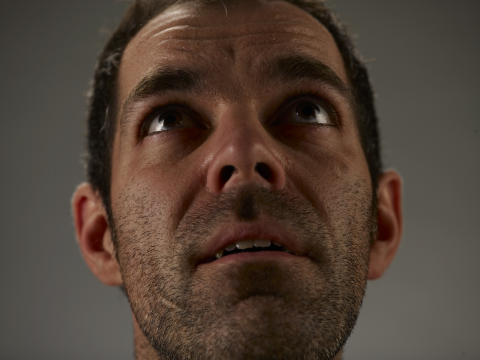Javier Lloret, trimester 2, 2012
Trimester 2, 2012
NOTE: All documentation material, PDF, photos, videos, etc, must be uploaded to the wiki. No embedding or third party hosts allowed, for obvious archiving issues ;)
NOTE: Please use "your name, the title of your project, the year" as page name.
Description
I've been working in two projects. At the beginning of the trimester I was interested in exploring the moments where a feeling of the progression of weirdness is created in film sequences. There are several factors that could generate that feeling: framing, sound, facial expressions, timing... I re-watched a lot of film sequences that I remembered that produced that feeling on me analyzing their composition. On the practical side I started taking portrait pictures trying to create those moments where something is about to happen or change but we don't know what it is.
When I was working on that series of pictures I was inspired by my readings for "Reading, Writing & Research Methodologies". I was reading several books about contemporary art pieces that uses found footage material from films and also the modernity in cinema. I got inspired to make a video installation about the starting of modernity in cinema.
Some film theorists and directors like Jacques Rivette, Alain Bergala and Domènech Font consider the film Viaggio in Italia by Roberto Rossellini as the beginning of the modernity in film.
I decided then to use the last sequence of that film. In that sequence the married couple are trying to reach each other but there is a crowd of people between them. I splitted that video sequence in two, one for each one of the characters. I stretched the time, slowing doen these two channels of video and looped them. Each one of them has a different duration so the installation shows continuously different moments where they are trying to reach each other. There are two channels of audio. Each one is connected to each one of the video streams. The intensity of them gets higher as the video streams get closer to their end.
In the film, at the end of that sequence the couple reach each other and after a short conversation where they decide to stay together the film ends. I decided to omit that end of the sequence to capture that moment before the film ends, which is, for some theorist, a symbolic point of inflection in the history of cinema.
Media
Photos
- At least 2, Max 5.
- native resolution only (that is the highest resolution you have for your photo and whatever resolution if you make screencaps)
- PNG format
Video
optional unless the final outcome of the project, or one of its main components, is a video/film/animation.
- allowed containers/codecs combos:
- WebM (preferred):
- Video codec: VP8 (3-5 Mbps data rate)
- Audio codec: Vorbis (-q 6)
- Ogg:
- Video codec: Theora (3-5 Mbps data rate)
- Audio codec: Vorbis (-q 6)
- MP4:
- Video Codec: H.264 (3-5 Mbps data rate)
- Audio Codec: AAC (160kbps or 384kbps if 5.1) or MP3 (-V0 or -b 320)
- WebM (preferred):
- resolution: 720p if source >= 720p, native resolution otherwise, progressive.
- FPS: 24, 25, 30.
- Sample rate:
- 44.1kHz if source is 44.1kHz or 88.2kHz
- 48 kHz if source is 48kHz or 96kHz
- 44.1 kHz for everything else.
Audio
optional unless the final outcome of the project, or one of its main components, is a sound piece/track.
- allowed containers/codecs combos:
- Ogg: Vorbis (-q 6) preferred
- MPEG: MP3 (-V0 or -b 320)
- FLAC (-8)
- Sample rate:
- 44.1kHz if source is 44.1kHz or 88.2kHz
- 48 kHz if source is 48kHz or 96kHz
- 44.1 kHz for everything else.
- Do not transcode! For instance, if the sound generated is directly an MP3, do not re-encode it with the settings above or with a different codec. Only encode original uncompressed or lossless compressed sources.
Essay
Abstract and bibs/ref + link to PDF (PDF must be uploaded to wiki).
Use Steve's recommendations for abstract length and bibliographic style.
Additional Information
optional
- Project URL (if lives on an external site)
- extra wiki links (in case you have relevant notes/journals/documentation in your User: page, this is useful particularly if you have been asked to articulate further or refine your project during your assessment)
- Animated GIFs

